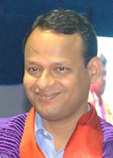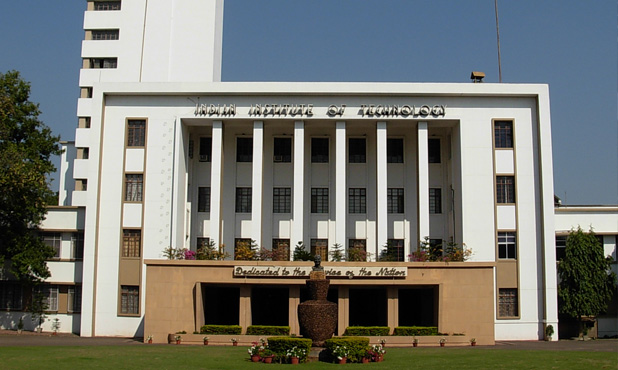Biomedical engineering (BME) is a bit of a rebel academic discipline. Though many students and young professionals believe in its binary compartmentalization [1], evidence from academia and experiences shared by young BME professionals strongly suggests the opposite. In India, there is a strong and growing integration of the life sciences with many different specialties within engineering, resulting in a fluidity and exchange of ideas among engineering disciplines that bodes well for continued BME advances and innovation.
Biswajoy Ghosh, a 24-year-old PhD candidate at the Indian Institute of Technology Kharagpur, rushes out of the lecture hall after the day’s lecture on Artificial Intelligence, and into the lab where Sri Phani Krishna, a 27-year-old senior PhD candidate, is preparing an interventional microscopic imaging setup for experiments with in vivo investigation of healing wounds. Nothing unusual here, except that Biswajoy has already graduated with a bachelor’s degree in biotechnology and subsequently with a master’s in medical imaging and informatics while Sri Phani is actually an electrical engineer. Such a scene is common in BME departments and grad schools across India that are dedicated to training the next generation of workers to meet biomedical industry demands. The syllabus at the Indian Institute of Technology Kharagpur, crafted in coordination with industry, is different from traditional academic programs and challenges the idea that biomedical engineers should only study physiology or biomedical instrumentation and cannot take up subjects from electrical engineering or computer sciences.
[accordion title=”Trying BME Outside of Academic Degree Earning Programs”]
Individuals without any clue of BME but interested to have a hands-on knowledge about it before deciding to enroll for an advanced degree in BME or individuals who believe they can contribute significantly to BME innovation but are not willing to take the university route, have options to try out a structured long term internship. The Stanford-India Biodesign Fellowship jointly offered by Stanford University, IITD, AIIMS in partnership with the Indo-US Science and Technology Forum (IUSSTF) provides interns the opportunity to work with faculty, industry representatives, government officials, local and US-based entrepreneurs, fellows on innovating the next generation of medical technology.
[/accordion]
“The BME grad school curriculum breathes in refreshing air in the classically compartmentalized academics” says Biswajoy. He recalls a number of instances when he has faced questions from his neighbors, relatives and friends ranging from why he still studies despite having completed grad school to why he studies artificial intelligence as a biotechnologist. What perplexes the traditionalists is the changing sphere of interdisciplinary education in the progressing world, and particularly that of BME combining engineering with medicine and the life sciences. When facing the reactions of those outside academia, Biswajoy compares their ideas to the ancient Indian folktale in which a group of blind men who have never seen an elephant decide to describe how an elephant looks by touch. Since each ends up touching only one part of the elephant’s body, they find, when they compare notes, complete discordance. BME is the equivalent of an elephant in academia, combining diverse aspects from different disciplines, just as an elephant’s physique is composed of a trunk resembling a pile, limbs resembling sturdy pillars, a tail resembling an open-ended rope and ears resembling large hand fans. Having seen the changed sphere of BME during his years in school, he is optimistic that the interdisciplinary nature of biomedical engineering is finding growing acceptance in India.
Both Biswajoy and Sri Phani study among colleagues who started careers in diverse disciplines ranging from electrical engineering, to the computer sciences, statistics, chemical engineering, human medicine, anatomy, physiology, botany, and genomics. Now they are studying biomedical engineering.
Is BME Compartmental?
Experience in hospitals, industry and on the cutting edge of research suggests the contrary. Those who embrace the integrated model are becoming the “achievers” in developing solutions for a better world. Biswajoy was motivated to take up BME in graduate school after completing his undergraduate degree in biotechnology after facing challenges with traditional drug discovery and had heard largely of analytical and engineering-assisted medical care in Germany and France. He is joined by a number of colleagues increasingly opting for BME graduate programs offered in the country’s leading engineering universities (including the Indian Institute of Technology [IITs]) focused on introducing analytical principles for high throughput medicine and patient-comfort-centric care delivery.
Sri Phani shares a different but inspiring story. He was fascinated by the mechanism of visual perception in our eyes and was intrigued by the lack of such features in an electronic imaging sensor. Little did he know then that he would be specializing one day in understanding these physiological features of the eye in healthy and diseased conditions while probing them with comparatively naive electronic imaging sensors. He was drawn to BME grad school programs now being offered at leading technical schools across the country with specializations ranging across medical imaging, informatics, medical electronics, clinical and rehabilitation engineering, biomechanics, prosthesis, implants and more. Sri Phani is now busy writing up his observations on the dynamics of cellular movements in live cell imaging and the functional histology of the eye. His observations are drawn through computational analysis of tissue-photon interaction in imaging. He believes that his graduate school experience will add to his confidence in dealing with devices which he may confidently use on himself one day, if necessary.
“Biomedical engineering education is a complex ecosystem” says Prof. Pranab K. Dutta, who has headed the School of Medical Science and Technology at the Indian Institute of Technology Kharagpur since 2009. This is the same school which offers India’s first graduate study program in biomedical engineering to medical graduates, who join after completing their MBBS degree. This program has been successfully providing biomedical industries and allied services sectors in India with intellectuals who bridge both the compartments with ease. He adds that “The domestic demand for biomedical engineering graduates in Indian industry is in its infancy while the supply is mature. On the other hand biomedical engineering is a highly skilled area and mostly requires a grad school degree. We would curiously observe rather than draw conclusions about the level of training currently offered at undergraduate curriculum, till the domestic industry grows up to its full scale to absorb all produced intellectual capital”.
Are Medical Schools Also Leading the BME Revolution?
The inclusion of BME as a regular academic discipline has not just been restricted to the technical universities and engineering schools, but medical schools have also been phenomenal in taking up initiatives. The country’s top medical university, All India Institute of Medical Sciences (AIIMS), New Delhi, offers advanced degrees like a PhD in BME in close collaboration with the Indian Institute of Technology Delhi (IITD). Shree Chitra Tirunal Institute for Medical Science and Technology, Thiruvananthapuram and Christian Medical College in Vellore jointly offer one of the country’s most coveted masters programs in clinical engineering and PhD in biomedical devices and technology along with the Indian Institute of Technology Madras.
BME programs offered in India are not just restricted to advanced degrees like masters and PhD but also include undergraduate programs pioneered by universities like Manipal University which also offers undergraduate and advanced medical programs; VIT University, Vellore; Osmania University, Hyderabad which started offering BME as early as in 1982.
Growing Integration in Engineering and the Life Sciences
 Rangadhar Pradhan invented lab-on chip styled sensing devices and technologies for evaluating drug efficacy and toxicity on the fly [2] to obtain a PhD in electronic biosensors fabrication from the School of Medical Science and Technology at Indian Institute of Technology Kharagpur (IITKGP). These small form-factor devices are expected to make patient specific drug testing a regular practice. Prior to embarking on this advanced degree he has studied for double-masters in zoology and agricultural engineering. Increasingly, BME is flourishing as a continuum and individuals and research groups with fuzzy interdisciplinary compartmentalization are in ensemble strengthening BME’s progress and effective translation for serving individuals looking forward to health and well being.
Rangadhar Pradhan invented lab-on chip styled sensing devices and technologies for evaluating drug efficacy and toxicity on the fly [2] to obtain a PhD in electronic biosensors fabrication from the School of Medical Science and Technology at Indian Institute of Technology Kharagpur (IITKGP). These small form-factor devices are expected to make patient specific drug testing a regular practice. Prior to embarking on this advanced degree he has studied for double-masters in zoology and agricultural engineering. Increasingly, BME is flourishing as a continuum and individuals and research groups with fuzzy interdisciplinary compartmentalization are in ensemble strengthening BME’s progress and effective translation for serving individuals looking forward to health and well being.
References:
- M. R. Neuman, “Binary BME”, IEEE Pulse, pp. 4-6, Nov/Dec. 2013.
- R. Pradhan, S. Rajput, M. Mandal, A. Mitra, S. Das, “Frequency dependent impedimetric cytotoxic evaluation of anticancer drug on breast cancer cell”, Biosens. Bioelectron. vol. 55, pp. 44-50, 2014.



